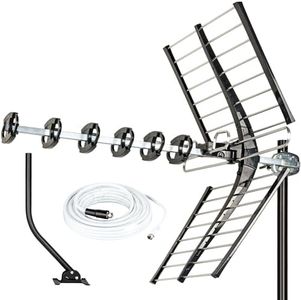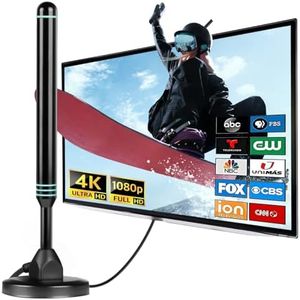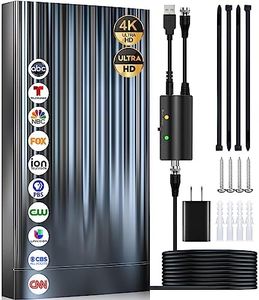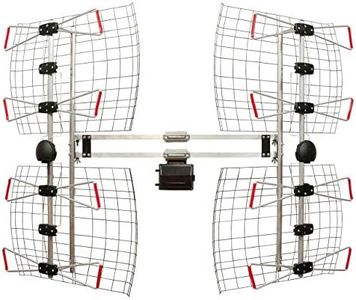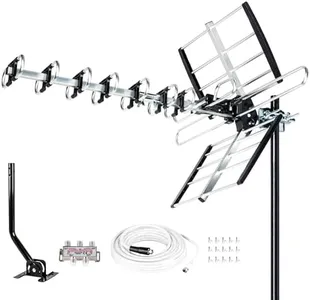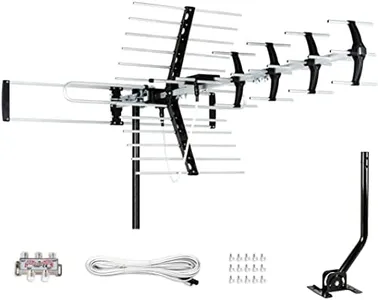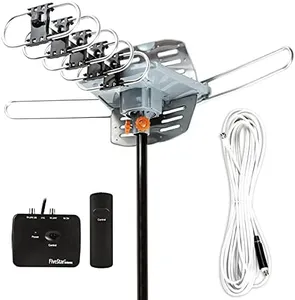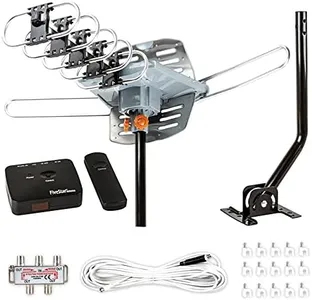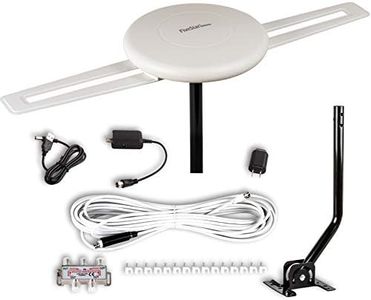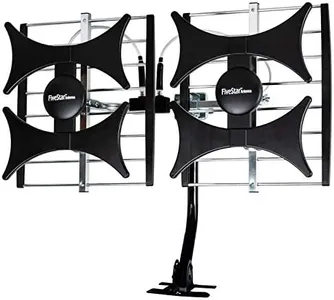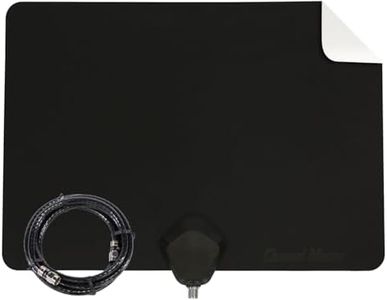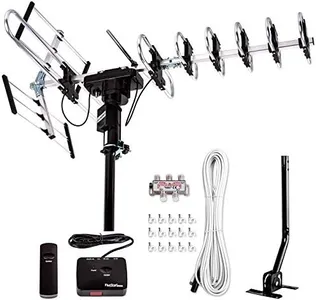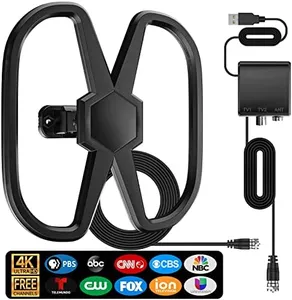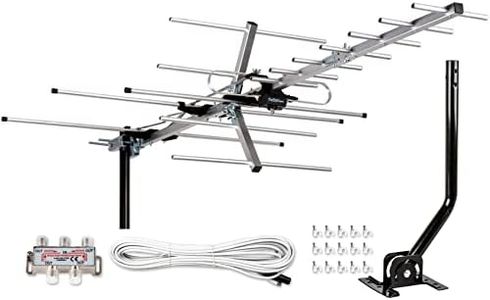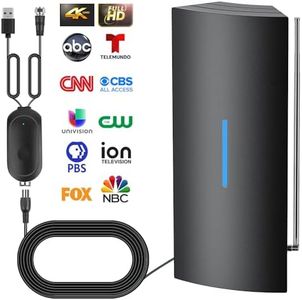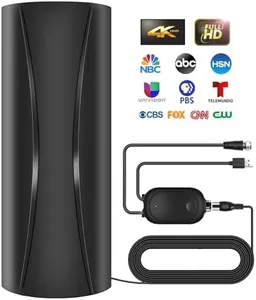We Use CookiesWe use cookies to enhance the security, performance,
functionality and for analytical and promotional activities. By continuing to browse this site you
are agreeing to our privacy policy
10 Best Long Range Tv Antenna 2025 in the United States
How do we rank products for you?
Our technology thoroughly searches through the online shopping world, reviewing hundreds of sites. We then process and analyze this information, updating in real-time to bring you the latest top-rated products. This way, you always get the best and most current options available.

Buying Guide for the Best Long Range Tv Antenna
Choosing the right long-range TV antenna can significantly improve your television viewing experience by providing access to more channels with better reception. The key is to understand the various specifications and how they align with your specific needs. Here are the main factors to consider when selecting a long-range TV antenna.RangeThe range of a TV antenna indicates how far it can receive signals from broadcast towers. This is crucial because it determines the number of channels you can access. Antennas with a range of up to 50 miles are suitable for urban areas with nearby towers, while those with a range of 50-100 miles are better for suburban areas. For rural areas or places far from broadcast towers, an antenna with a range of over 100 miles is ideal. To pick the right one, consider the distance from your home to the nearest broadcast towers.
Frequency BandsTV antennas can receive signals on different frequency bands, mainly VHF (Very High Frequency) and UHF (Ultra High Frequency). VHF channels are typically channels 2-13, while UHF channels are 14-69. Some antennas are designed to receive both VHF and UHF signals, which is important if you want to access a wide range of channels. If you know that most of your desired channels are on UHF, you might opt for a UHF-only antenna. However, a dual-band antenna is generally a safer choice to cover all possibilities.
Antenna TypeThere are different types of TV antennas, including indoor, outdoor, and attic antennas. Indoor antennas are easy to install and suitable for areas with strong signal strength. Outdoor antennas are mounted outside and can receive signals from a greater distance, making them ideal for rural or suburban areas. Attic antennas are installed in the attic and offer a balance between ease of installation and performance. Choose an antenna type based on your living situation and the strength of the signal in your area.
Directional vs. OmnidirectionalDirectional antennas are designed to receive signals from one direction, which can be beneficial if all the broadcast towers are located in the same area. Omnidirectional antennas can receive signals from multiple directions, making them suitable for areas where broadcast towers are spread out. If you live in a location where signals come from various directions, an omnidirectional antenna is the best choice. Otherwise, a directional antenna can provide a stronger signal from a specific direction.
AmplificationSome TV antennas come with built-in amplifiers to boost signal strength, which can be helpful in areas with weak signals or if you are using a long cable to connect the antenna to your TV. Amplified antennas can improve reception and reduce signal loss. However, in areas with strong signals, an amplifier might cause interference. Consider an amplified antenna if you are far from broadcast towers or have obstacles like buildings or trees that might weaken the signal.
Installation and MountingThe ease of installation and mounting options can affect your choice of antenna. Some antennas come with mounting hardware and are easy to set up, while others might require professional installation. Outdoor antennas typically need more effort to install compared to indoor or attic antennas. Consider your comfort level with installation and whether you might need professional help. Also, think about where you can mount the antenna for the best reception.
Most Popular Categories Right Now
